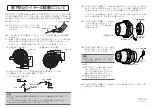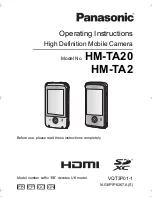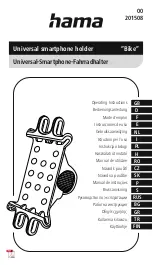
4
www.enersys-emea.com
7. Installation
7.1 Conventional, non-seismic stands (supplied as standard)
A comprehensive range of free-standing, conventional steel stands
has been specifically designed to provide a compact and effective
arrangement for PowerSafe
®
DDm battery modules whilst retaining
the requirements of electrical and mechanical safety, ease of
installation and access.
Each stand assembly (see fig. 12.1), which is individually tailored to
the battery type, is built from four basic components:
• frame, fabricated from square steel tube (2 or more frames)
• runner, fabricated from square steel tube (total 3 per tier)
• flat steel tie-bar
• terminal rail, fabricated from Unistrut framing channel
These component parts are factory finished with a high quality
electro-statically deposited epoxy powder coating which, in
addition to its high dielectric resistance, is acid and saline resistant,
fireproof, scratch and impact resistant.
The base of each frame is fitted with an adjustable insulating foot
assembly to allow precise levelling on uneven floors. Each stand
kit includes all the necessary fastener sets, which are dimensionally
matched to the predrilled holes in frames, runners and tie-bars, to
ensure a rigid assembly.
Before commencing to erect the stand, smear all screw threads
with petroleum jelly. The adjustable insulating feet should then be
screwed fully into the threaded plate at the base of the frame leg.
Loosely fix one runner to the top tier of the end (and intermediate)
frames and similarly fix one to the bottom tier. Fix tie(s) in position
at the back of the stand. Continue by fixing all other runners and
the top mounted terminal rail loosely in position.
Complete assembly of stand by tightening all screws, ensuring that
the frames are at right angles to the runners. Unscrew the
insulating feet in the base of the frames if necessary, to level the
stand. Ensure that the lock-nut is re-tightened after adjustment.
Take the cell modules and wipe down clean and dry.
Ensure that modules are correctly configured, i.e. position of
terminals, for the position it occupies in the battery and then slide
into position on the stand, starting on the bottom tier and working
upwards to the highest level.
NB: Take care to observe the correct unit-mounting centres along
the length of the stand and also correct alignment of adjacent units
one above the other.
In this respect use inter-row and inter-cell connectors to achieve
longitudinal and vertical alignment.
When all modules have been placed on the stand, and in the case
of anti-shock stands when the module clamping plates have been
fitted, connect them together by means of the connecting straps
and fastener set, in sequence, pillar, connecting strap, plain washer,
spring washer and setscrew using insulated tools.
Fastening torque is 10Nm (88 in-lbs).
NB: The battery may not completely fill the stand.
7.2 Anti-shock stands
These are similar in design to those described in paragraph
7.1. with two exceptions:
• the frames are fitted with flat base plates instead of adjustable
feet. This allows the stand to be securely fixed to the floor using
suitable M12 fixings.
• the front runner on each tier is fitted with captive nuts along the
front face of the runner to allow clamping plates to be fitted over
the flanges and edge of the cell lid of adjacent modules (see fig.
12.2).
NB: The clamping plates must be fitted before cell connection
commences.
7.3 Seismic UBC Zone 4 stands
These stands are available as an option. Should you have
ordered these, please refer to the specific installation manual.
7.4 Connector details (see fig. 12.3 & 12.4)
For Telecom applications, please refer to figure 12.3, for all other
applications refer to figure 12.4.
Insulated solid copper connectors, one per pole, are used for all
inter-cell connections.
Heavy-duty flexible cables, one per pole, are used for inter-stand
connections when necessary.
Insulated tools must be used when working on a battery. If pliers,
spanners, etc are not insulated, they can cause the danger of a
short circuit.
Apply an even coating of lanolised petroleum jelly to the pillars,
bolts, washers and connectors before and after assembly.
Note particularly that the positive terminal of one module is
connected to the negative terminal of the next, throughout the
battery, leaving the positive and negative terminals of the battery
free for connection to the optional terminal plates or the
customer’s take-off cables.
Once the connectors are fitted and the bolts tightened to their
correct torque settings, the exposed ends of the connectors and
intermediate pillars on inter-row connections, should be insulated
using the clip on shrouds supplied. Connector end caps should be
cut back to the trim line with a sharp knife, for use on 10 mm thick
inter-row connectors only.
7.5 Terminal plates
Large copper terminal plates are available on request to allow the
connection of large or multiple cables onto the battery to avoid
strain on the cell pillars. These are fitted onto the Unistrut terminal
rail at the top of the battery stand (see fig. 12.1) using the stand-off
insulators provided. Each terminal plate (positive and negative) is
then insulated with the colour coded flexible PVC shrouds
supplied. The shroud can easily be trimmed to allow passage of
the main cables to the system charger or isolator.
7.6 Cell numbering
Self-adhesive number labels are supplied, one for each
cell/module. It is important that the surface is clean and dry before
fitting the label which is done by removing the backing paper,
placing the label in a suitable position on the front face of the cell
and applying even pressure to the whole area of the label.
Do not obstruct the vent hole with the cell number label.
Unless a local rule exists, it is usual to number the cells beginning
with No.1 at the positive end of the battery.
Continue numbering consecutively by following exactly the
electrical connections right through to the negative end of the
battery.
7.7 Front covers
Please note, PowerSafe
®
DDm cells accommodated on either
conventional or anti-shock stands have connectors that are
individually insulated so front covers are only supplied when
specifically requested. However, insulating front covers are
supplied as standard when PowerSafe DDm cell are
accommodated on seismic UBC Zone 4 stands.
Front covers are designed to be fitted on completion of the
connecting up sequence of the battery.
Before fitting them, first ensure that:
• the modules are connected in the correct sequence. Charging a
cell or battery in the wrong direction will cause permanent
damage.
Summary of Contents for PowerSafe 2DDM50-09
Page 11: ...11 www enersys emea com Notes...






























